Watermelon Siberian lights, reviews about the variety, recommendations for growing

Watermelons, as a culture, is already about 4 thousand years old. This is an annual plant. They learned to cultivate the crop back in Ancient Egypt. Watermelon came to us from South Africa.
The southern regions of our country are engaged in cultivation. In the northern regions, watermelon simply does not have time to ripen. Breeders have developed cold-resistant varieties of this crop for the northern regions.
Content:
- Watermelons as a crop
- Variety Siberian Lights
- Characteristics and features of the variety
- Growing technology
- Reviews from summer residents about the watermelon variety Siberian Lights
Watermelons as a crop
Watermelon heat-loving and light-loving plant. Therefore, it grows in regions where daylight hours are long and summer is most of the year. But gardeners are inventive and creative people, they are constantly trying to change something in the cultivation of such exotic crops. After all, every gardener wants to see this exotic crop on his plot.

So watermelon was no exception; several varieties of watermelon were bred for the northern regions. Here to this day, the crop grows well and bears fruit, managing to do this even in the short summer Siberian region. Previously, it seemed impossible to grow such a miracle in the harsh Siberian climate, but experienced breeders achieved a worthy result.
Watermelon Siberian Lights, and reviews from gardeners about it, prove that this variety is truly a miracle for the climate Siberia.
Variety Siberian Lights
This variety is rightly called one of the best cold-resistant crops. It has become popular among gardeners and summer residents of harsh Siberia.
Even under such climatic conditions, this plant is able to ripen in a short time. Siberian summer. The ripening period is 75-95 days. The culture is resistant to fusarium. It has high productivity.
Its appearance is a medium-sized ball, dark green in color with black stripes. The flesh of the watermelon is bright red in color and the rind is thin. The pulp is tender, not dense, sweet in taste. The weight of the fetus is 1 - 2.5 kg, sometimes grows up to 5 kg.

High resistance to climate temperature changes allows you to grow the crop in a greenhouse or open ground.
The culture is convenient for small gardens and vegetable gardens, it takes up little space, the vines grow up to 2.5 m. It is possible to plant the plant without seedlings.
Characteristics and features of the variety
Siberian Lights is one of the best varieties of Siberian watermelons. It was bred specifically for cold climates. The variety tolerates low temperatures and drought well.
Characteristics of the variety:
- Early ripening variety.
- Average weight 5 kg.
- Productivity amounts to 370 centners.
- The vegetative period is 75-85 days.
- It can be planted in open or closed ground.
- It has excellent commercial qualities and is suitable for transportation.
Growing technology
Watermelon has proven itself well in regions where there is not enough sun and there are not enough warm days. Therefore, in order for fruit ripening to be 100 percent, it is better to use the seedling planting method.
Seeds for seedlings are planted a month before planting in open ground or a greenhouse.
The soil for seedlings is prepared in advance. It is good to plant the plant in the places where it grew before potato, legumes or cabbage.
The land is prepared in the fall. To create a favorable microclimate for the crop, organic fertilizers are placed in the finished trench in the fall. In the spring, manure is added to the trench, and after three plots, seedlings can be planted in the prepared soil.
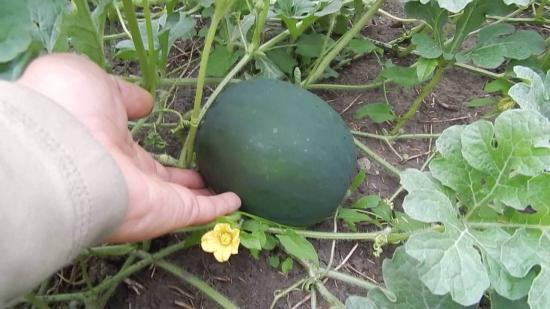
If you use the seedless method, you need to wait until the soil warms up to 15 degrees. Only after this are the watermelon seeds planted. They are planted to a depth of 8-10 cm.
As a rule, in June the weather is not entirely stable and there are still frost, so it would be advisable to cover the soil with film. After 1-2 weeks, you can feed the crop with organic fertilizer previously diluted in warm water.
The plant does not require frequent watering. It is recommended to stop watering a month before harvest. At this time, replace watering with fertilizing. Potassium-phosphorus fertilizers are perfect.
Important: do not leave more than three stems when forming a plant; the remaining stepsons must be removed, otherwise it will negatively affect the harvest.
Reviews from summer residents about the watermelon variety Siberian Lights
U Siberian For summer residents, the Siberian Lights variety has established itself as an unpretentious watermelon with excellent taste and presentation. Reviews about the Siberian Lights watermelon are only positive.
All varieties of Siberian watermelons are good in their own way, but Siberian Lights are noted separately by amateur and professional gardeners.

Everyone who planted it at least once on their site was able to appreciate its features and characteristics.
This is why this variety is by far the most popular in the garden beds of Siberian summer residents. Photo of watermelon Siberian lights and reviews can be seen on any of the sites of gardeners who share their experience in growing this crop.
The Siberian Lights watermelon variety has proven itself well, and therefore experienced gardeners are happy to plant this particular variety in their plots.
And they believe that everyone who wants to see watermelons on their table can easily grow one at home, even in their summer cottage.
You can get even more information about the variety by watching the video:




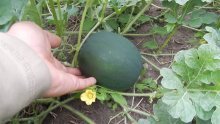

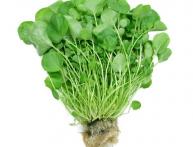
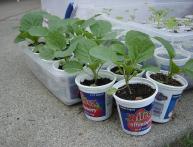
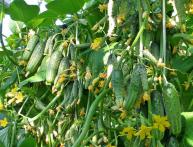
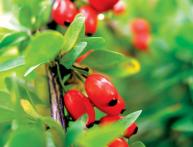

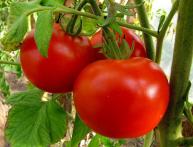

Comments
Next year I will definitely try to grow watermelons. I have already purchased a couple of varieties, but now I want to try “Siberian Lights”, although they are also early ripening varieties.
We have been growing these watermelons since 2016, we have already harvested 2 harvests, the children and I are delighted - both with the growing process and with the result! Watermelons turn out neat, small, sweet (but not as watery as Astrakhan ones), and have a very thin rind. We live in the Omsk region, we plant in the ground at the end of May, and at the beginning of September we harvest!
This year we tried to plant this variety. He hasn't matured. Other varieties of watermelons were planted and they ripened. We live in the central part of Russia. Perhaps they chose an unfavorable place for sowing. We'll try again this year.
Several times at the market I had the opportunity to come across such watermelons, perhaps I was very mistaken about the variety, but when I bought them, they were somehow not sweet and not particularly tasty.